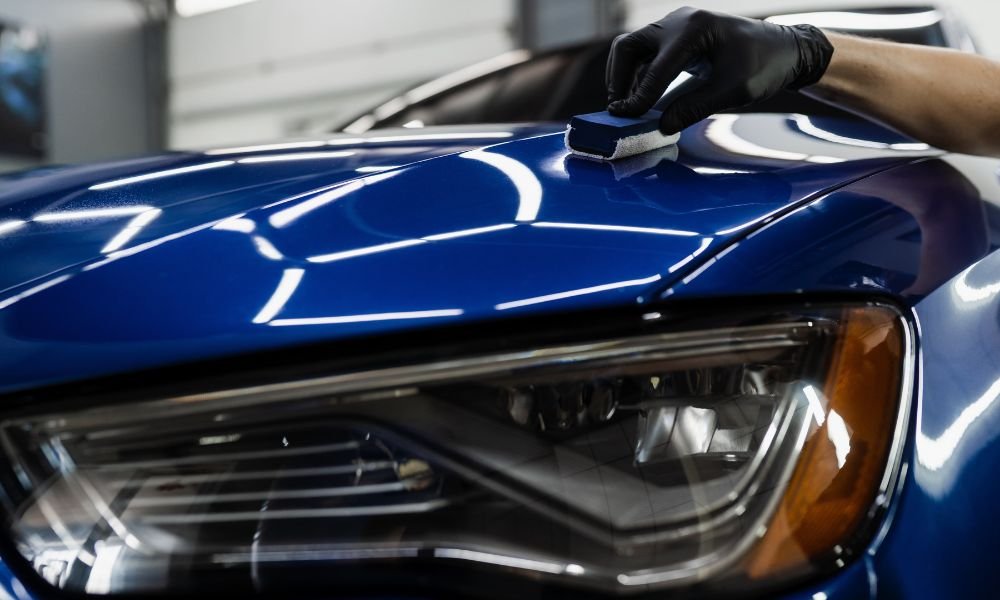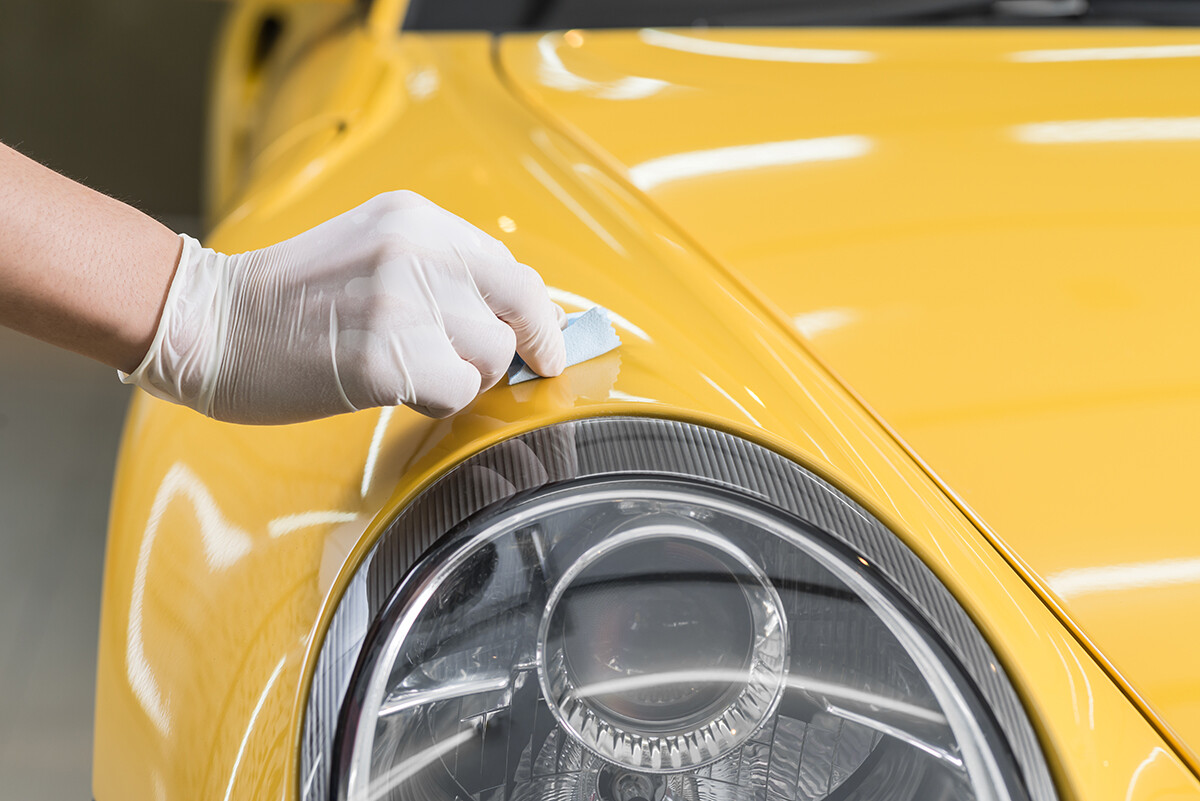Change Your Car with Specialist Ceramic Coatings San Jose
Revealing the Scientific Research Behind Ceramic Coatings: How Does It Job and Why Is It Superior to Typical Alternatives?
Ceramic coverings have been obtaining popularity in different sectors for their outstanding performance and sturdiness. The scientific research behind these finishes surpasses plain surface security, delving into the complex chemistry that makes them attract attention from conventional alternatives (ceramic coatings san jose). Comprehending just how ceramic finishings job and why they outshine conventional choices is important for those seeking to enhance the longevity and durability of their products. So, just what sets ceramic layers apart, and how do they achieve such exceptional outcomes?
The Chemistry of Ceramic Coatings
In recognizing ceramic coverings, diving into the intricate chemistry behind their make-up is vital for understanding their capability and toughness. Ceramic finishings are primarily made up of silicon dioxide (SiO2), which forms a solid and protective layer when put on different surface areas. This chemical structure gives extraordinary resistance to heat, chemicals, and rust, making ceramic coatings extremely sought after for a broad array of applications.
The chemistry behind ceramic finishings involves the formation of covalent bonds between silicon and oxygen atoms, creating a stiff network that boosts the finishing's sturdiness and toughness. Furthermore, the visibility of other aspects such as titanium, zirconium, and aluminum further improves the finishing's properties, supplying increased hardness and bond to surface areas.
Understanding the chemical structure of ceramic finishings allows for the personalization of formulas to fit details requirements, whether it be for automotive, commercial, or residential purposes. By using the power of chemistry, ceramic coverings remain to pave the means for exceptional protection and efficiency in numerous markets.
Advantages of Ceramic Coatings

One more significant advantage of ceramic coverings is their hydrophobic nature. This residential property triggers water to bead up and roll off the layered surface area, carrying dust and pollutants with it. Therefore, ceramic finishes make cleaning and keeping surfaces a lot easier and less taxing. Ceramic coverings supply enhanced gloss and tint depth, offering surface areas a glossy and vivid look. In general, the wide variety of benefits provided by ceramic layers make them an exceptional alternative compared to standard layer methods.
Exactly How Ceramic Coatings Bond
Ceramic finishes bond to surface areas with a process that includes molecular attachment and chemical communications. When a ceramic layer is applied to a surface, it creates a solid bond by chemically adhering to the surface area at a molecular degree.
Additionally, the chemical interactions between the ceramic finishing and the surface area additionally boost the bond. ceramic coatings san jose. These interactions permit the ceramic finish to go to my site produce a constant and smooth layer externally, supplying outstanding protection and toughness. Unlike traditional finishings that may remain on the surface area without fully bonding, ceramic coverings develop a long-term bond that is resistant to chemicals, UV rays, and rough environmental problems

In significance, the bonding system of ceramic coverings makes certain a reliable and resilient protective layer that outmatches standard covering alternatives. This exceptional bond adds to the toughness, scratch resistance, and durability of ceramic coverings, making them a recommended option for various applications.
Toughness of Ceramic Coatings
The outstanding longevity of ceramic layers comes from their durable molecular i was reading this bond and chemical interactions with surface areas, making sure a resilient safety layer that surpasses traditional covering options. As soon as applied, ceramic coverings develop a solid bond with the substrate, creating a resistant barrier versus numerous environmental stress factors such as UV radiation, chemicals, and abrasions. This bond is so protected that it can stand up to the roughness of day-to-day use without wearing away or deteriorating quickly.
Unlike typical layers that may weaken over time, ceramic coverings keep their honesty for an extensive duration, providing lasting security for the underlying surface area. Generally, the exceptional sturdiness of ceramic coverings makes them a remarkable choice for safeguarding a wide array of surfaces in different applications.
Ceramic Coatings Vs. Typical Choices
In contrast to conventional finishing techniques, ceramic layers offer a distinctive blend of sturdiness and protective abilities that establish them apart in different surface area defense applications. Typical alternatives such as wax or sealers provide a momentary layer of security that can disappear quickly, needing regular reapplication. On the other hand, ceramic finishes form a solid bond with the surface area, producing a semi-permanent or long-term obstacle that is very immune to abrasion, chemicals, UV rays, and severe temperature levels.
In addition, ceramic layers supply premium hydrophobic homes compared to traditional coatings. The hydrophobic nature of ceramic coatings creates water to grain up and roll off the surface, lugging dirt and contaminants with it. This self-cleaning effect aids to preserve the surface's cleanliness and gloss for extensive durations, decreasing the need for constant upkeep.
Furthermore, ceramic coverings have a thicker layer compared to typical choices, offering boosted scrape resistance click here to read and security versus small impacts. This durability makes certain resilient performance and aids protect the visual allure of the dealt with surface for a prolonged period.
Verdict
To conclude, the science behind ceramic layers depends on their chemical composition and bonding properties, making them remarkable to conventional alternatives. The benefits of ceramic finishes include raised sturdiness and protection for surface areas. By understanding just how ceramic coverings job and their advantages over typical choices, one can make enlightened decisions when thinking about coating choices for various applications.
Unlike typical finishings that might sit on the surface without totally bonding, ceramic coverings produce an irreversible bond that is resistant to chemicals, UV rays, and rough ecological conditions.
The phenomenal longevity of ceramic finishes stems from their durable molecular bond and chemical interactions with surface areas, making certain a resilient protective layer that exceeds standard layer alternatives.Unlike traditional finishings that might break down over time, ceramic finishes preserve their stability for a prolonged period, supplying resilient security for the underlying surface.In contrast to traditional finish methods, ceramic layers provide an unique mix of toughness and safety abilities that set them apart in numerous surface area security applications. By understanding just how ceramic finishes job and their advantages over conventional options, one can make enlightened choices when taking into consideration layer choices for numerous applications.